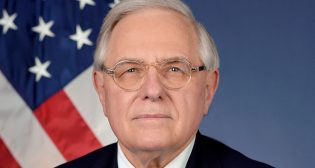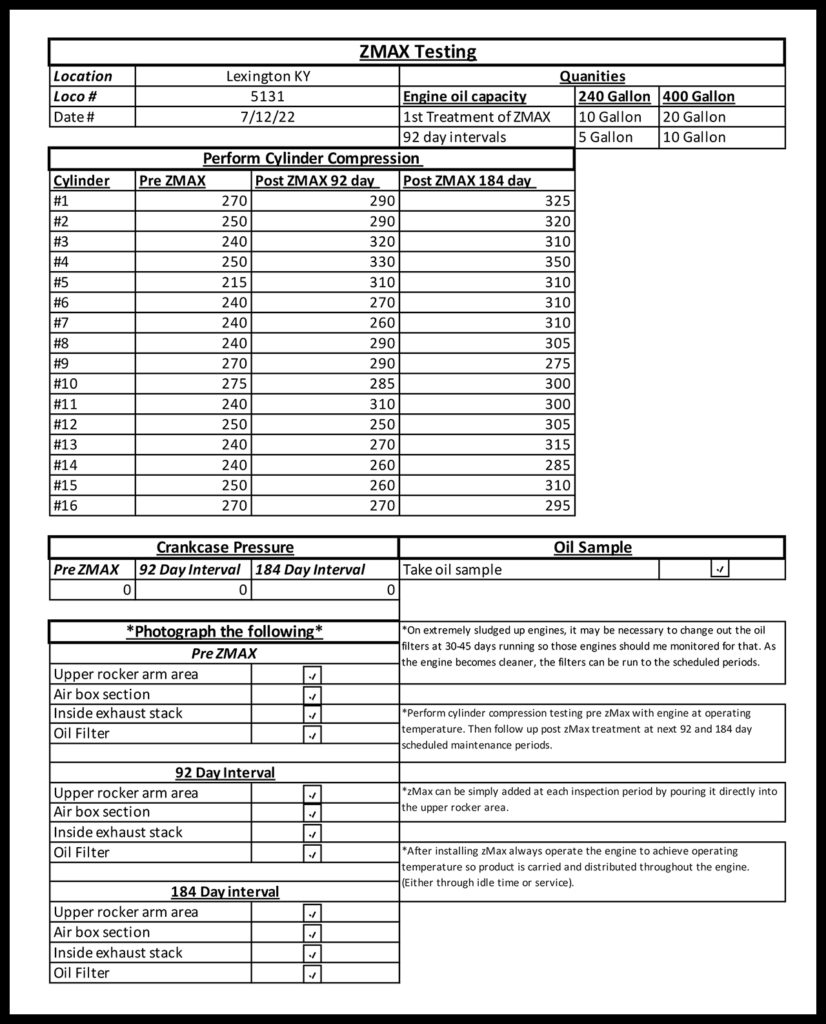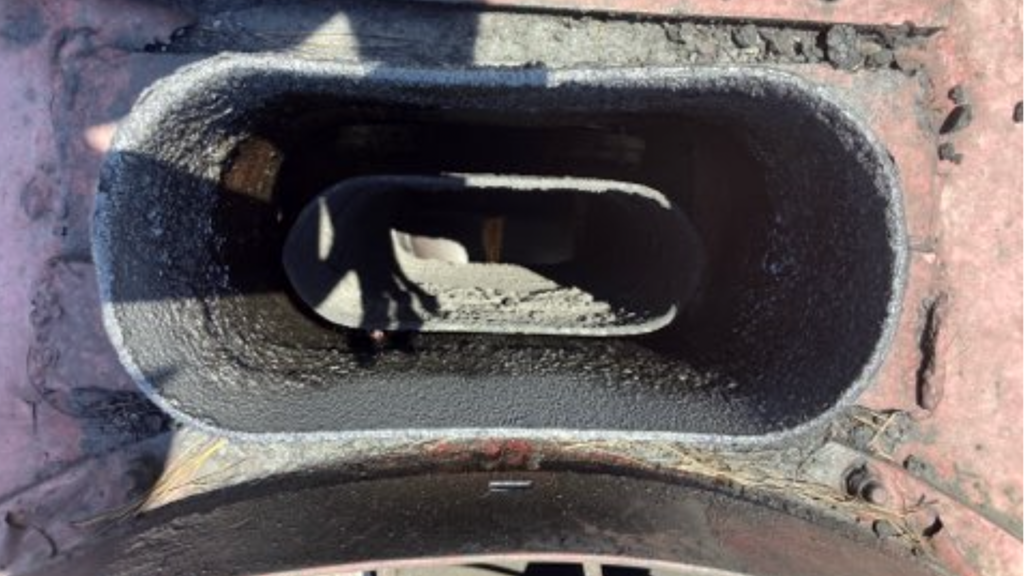
‘Micro-Lubrication is Our Best Friend’
Written by William C. Vantuono, Editor-in-Chief
RAILWAY AGE, SEPTEMBER 2023 ISSUE: GP38-2 No. 5131 is, in many ways, a typical Class II or Class III diesel-electric locomotive. It’s a rebuilt unit acquired from a Class I, in this case, Norfolk Southern. But the four-axle workhorse, in RJ Corman Railroad Company’s distinctive red, grey and white livery, is atypical because its 2,000-hp, 16-cylinder EMD 645E prime-mover is treated with zMAX® micro-lubricant in the fuel and oil systems.
For the past year, 5131 and eight sibling GP38-2s, plus 11 EMD SD70s—all acquired from NS—have been operating with zMAX®. Soon, five former CSX GP15s will receive the zMAX® treatment. The intent, RJ Corman Vice President Mechanical Todd Comer tells Railway Age, is to “maximize preventive maintenance, reduce power assembly failures, and cut down on exhaust stack fires, which is not an easy thing to do, because our locomotives typically run at lower throttle settings than linehaul units, increasing carbon buildup.”
Comer, following 30 years of experience at NS in the Mechanical department, joined RJ Corman in early 2022. He’s familiar with 5131, indeed, all the locomotives purchased from NS. After seeing the results, he’s convinced of zMAX® benefits. “I’m a big believer in this product, based on what we’re seeing in a short amount of time,” he says. “Prior to zMAX® treatment, we were experiencing as many as 10 exhaust stack fires, which are a real concern in our rural operating territories because the embers can ignite trackside brush fires. In the increasingly hot, dry conditions we’ve seen, fires can easily spread. They’re a safety risk as well as a financial risk, because the fines can be quite hefty. Since we started using zMAX®, we’ve experienced only one stack fire. And the numbers we’ve been seeing with static compression testing—improvements as high as 100 PSI (chart, below)—have blown us all away. Micro-lubrication is our best friend.”

RJ Corman Railroad Company President Ray Goss, with 45 years’ experience (22 at Canadian Pacific, five at Amtrak, and 15 at Genesee & Wyoming, among other assignments), concurs. “As Todd pointed out, our locomotives operate at constant low throttle notches,” he notes. “We’re benefiting from clean fuel injectors, which means improved fuel efficiency. The exhaust stacks are clean (before and after photos, below). Our 92- and 184-day inspections show that we’re getting positive results. For example, the air boxes are requiring little or no cleaning, because the ash deposits are so minor. zMAX® has been a blessing, and we intend to extend its use, based on specific customer needs and where we believe the risk factors are high.”

Top: Exhaust stack on RJ Corman Railroad Company GP38-2 5131 before using zMAX®.Below: Using zMAX® improved combustion (less blow-by), resulting in lower lube oil consumption and a cleaner exhaust stack on 5131.

zMAX®, developed more than 75 years ago by motorsports engine-building icon Joe Lencki and originally named “Speedway Cocktail,” is not an additive. As described by manufacturer Oil-Chem Research Corp. Chief Technical Officer Ed Rachanski Jr., zMAX® is produced with a proprietary reformation formula. “We start with highly refined petroleum oil whose molecular structure is further refined to create a Micro-lubricant™,” he says. “zMAX® uses the engine’s lube oil as a carrying agent to reach the metal. Based on Auger Electron Spectroscopy, it penetrates into metal 82 times deeper than other lubricants. It keeps metal surfaces cooler and better lubricated to help fuels and oils do the job they were designed for. It cleans, lubricates and protects metal from the inside out, and disperses varnish, carbon and other harmful performance-robbing deposits.”
“zMAX® is not an oil additive or chemical,” Rachanski stresses. “It’s a pure petroleum product compatible with all motor oils, conventional and synthetic. Its molecules have been reformulated smaller than regular engine oil molecules. This allows its unique ‘micro-molecules’ to soak into the metal. Ordinary engine oil additives can use materials like Teflon®, PTFE, zinc phosphates, Graphite and MoS2 in an effort to increase protection and lubricity. Based on SAE J357, a lubricant additive agent is ‘a material designed to enhance the performance properties of the base stock or to improve the base stock properties that do not naturally exist.’ zMAX® does neither, as it is not designed to improve or enhance any qualities of the engine oil. Introducing zMAX® into the engine oil is the means to transport it directly to the engine’s metallurgy.”
zMAX® “maintains the critical oil film seal between the pistons, rings and cylinder walls, resulting in proper combustion sealing and reduced blow-by,” says Rachanski. “Proper combustion sealing increases horsepower. It reduces and stabilizes fuel and oil consumption. It reduces oil particulate emissions, black smoke (partially burned fuel) from the exhaust stack and oil puddles from the crankcase breather hose. In older engines, even those with silver bearings, it improves lubricity and reduces wear, dissolving and dispersing harmful deposits, helping to improve and maintain performance. In new or remanufactured engines, if used during assembly or at initial start-up, zMAX® will help maintain baseline performance throughout the life of the engine. In turbocharged applications, it increases cooling, reduces deposits, provides better heat dissipation at shutdown and helps improve turbo response.” During storage, a zMAX®-treated oil film “stays on the metal, continuously protecting against rust and corrosion.”
RJ Corman Railroad Company is convinced. Who will be next to incorporate zMAX® into their locomotive fleets?



